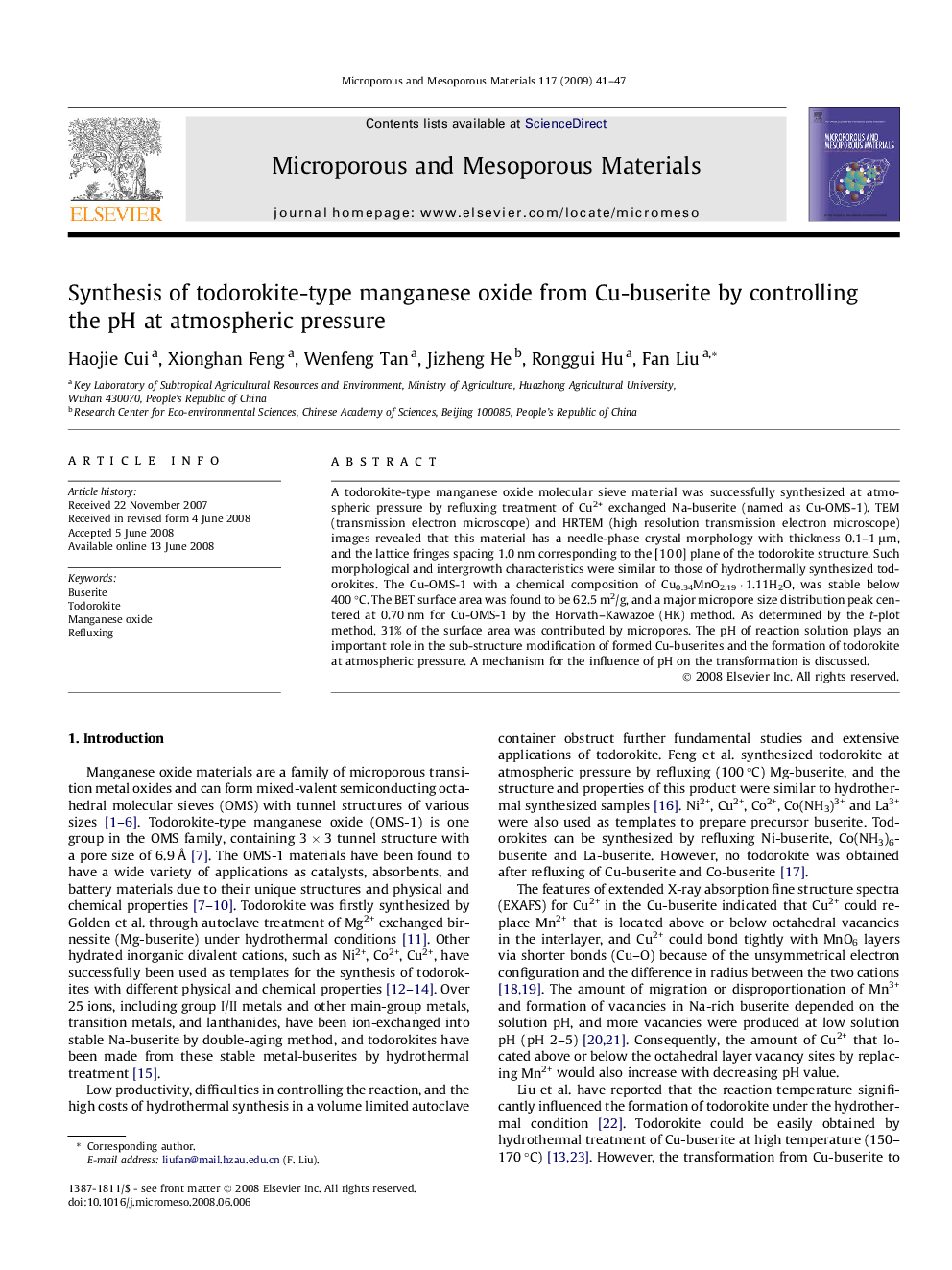| Article ID | Journal | Published Year | Pages | File Type |
|---|---|---|---|---|
| 75306 | Microporous and Mesoporous Materials | 2009 | 7 Pages |
A todorokite-type manganese oxide molecular sieve material was successfully synthesized at atmospheric pressure by refluxing treatment of Cu2+ exchanged Na-buserite (named as Cu-OMS-1). TEM (transmission electron microscope) and HRTEM (high resolution transmission electron microscope) images revealed that this material has a needle-phase crystal morphology with thickness 0.1–1 μm, and the lattice fringes spacing 1.0 nm corresponding to the [1 0 0] plane of the todorokite structure. Such morphological and intergrowth characteristics were similar to those of hydrothermally synthesized todorokites. The Cu-OMS-1 with a chemical composition of Cu0.34MnO2.19 · 1.11H2O, was stable below 400 °C. The BET surface area was found to be 62.5 m2/g, and a major micropore size distribution peak centered at 0.70 nm for Cu-OMS-1 by the Horvath–Kawazoe (HK) method. As determined by the t-plot method, 31% of the surface area was contributed by micropores. The pH of reaction solution plays an important role in the sub-structure modification of formed Cu-buserites and the formation of todorokite at atmospheric pressure. A mechanism for the influence of pH on the transformation is discussed.
